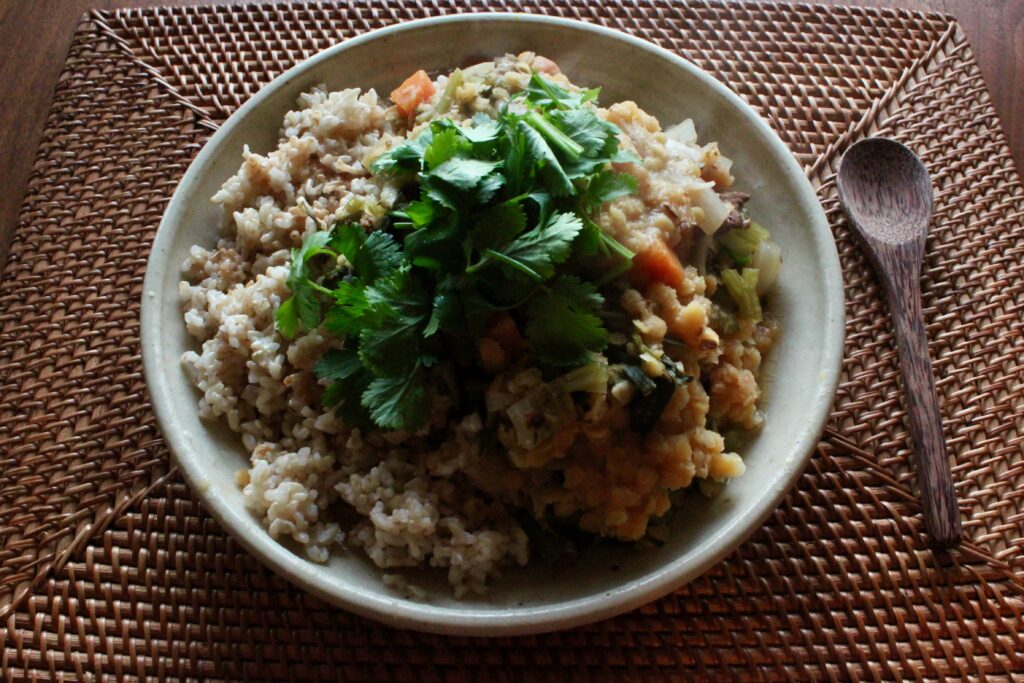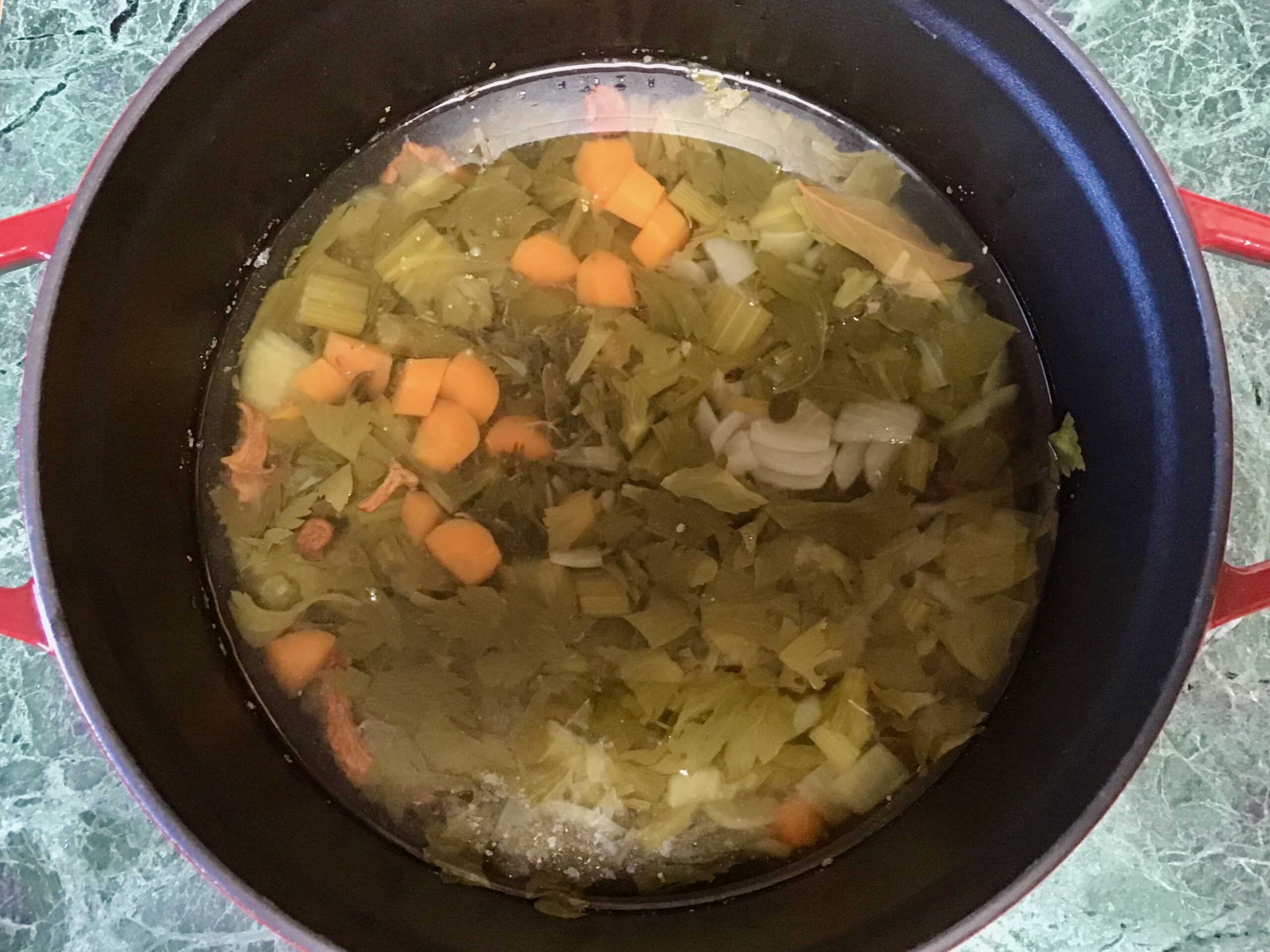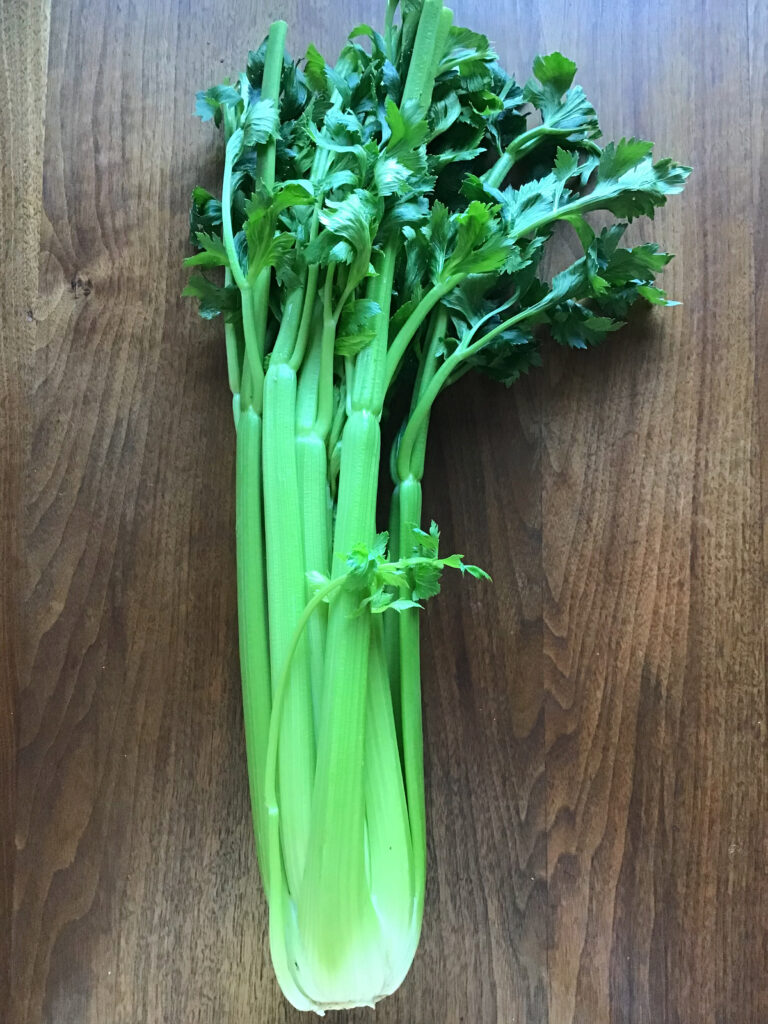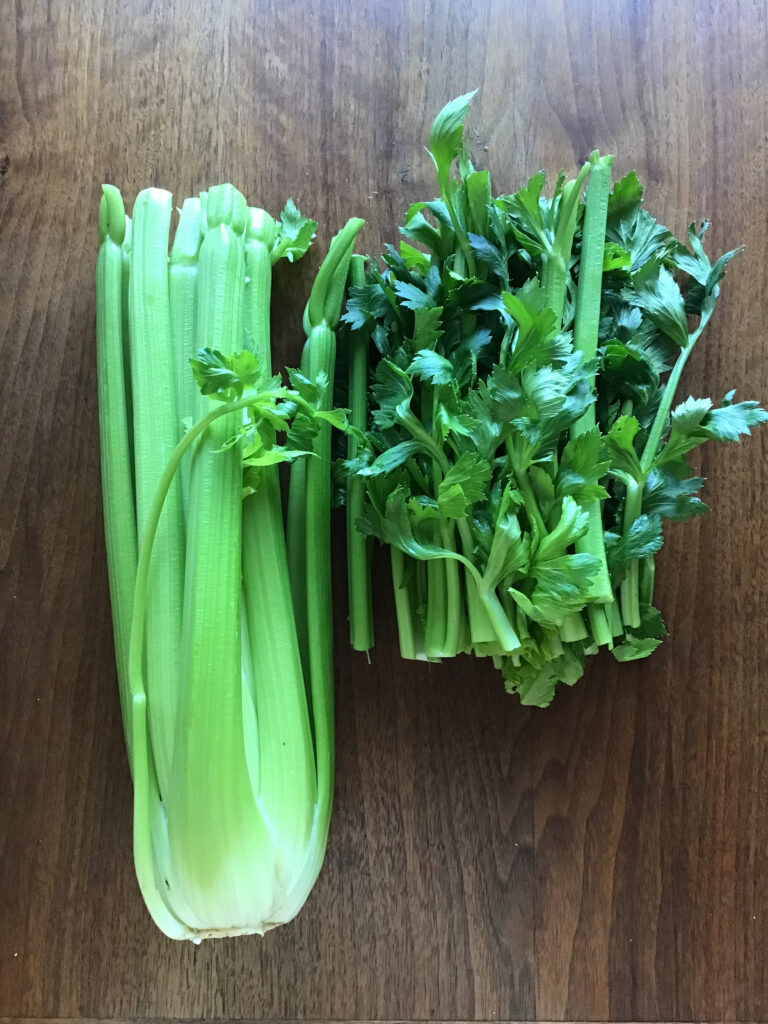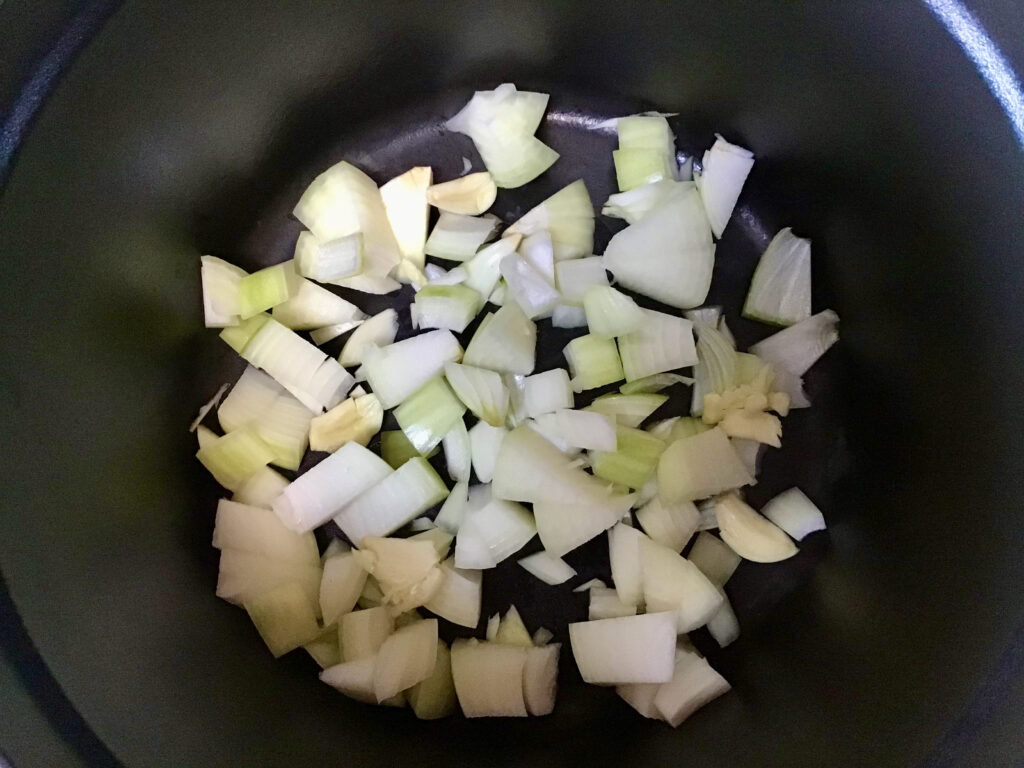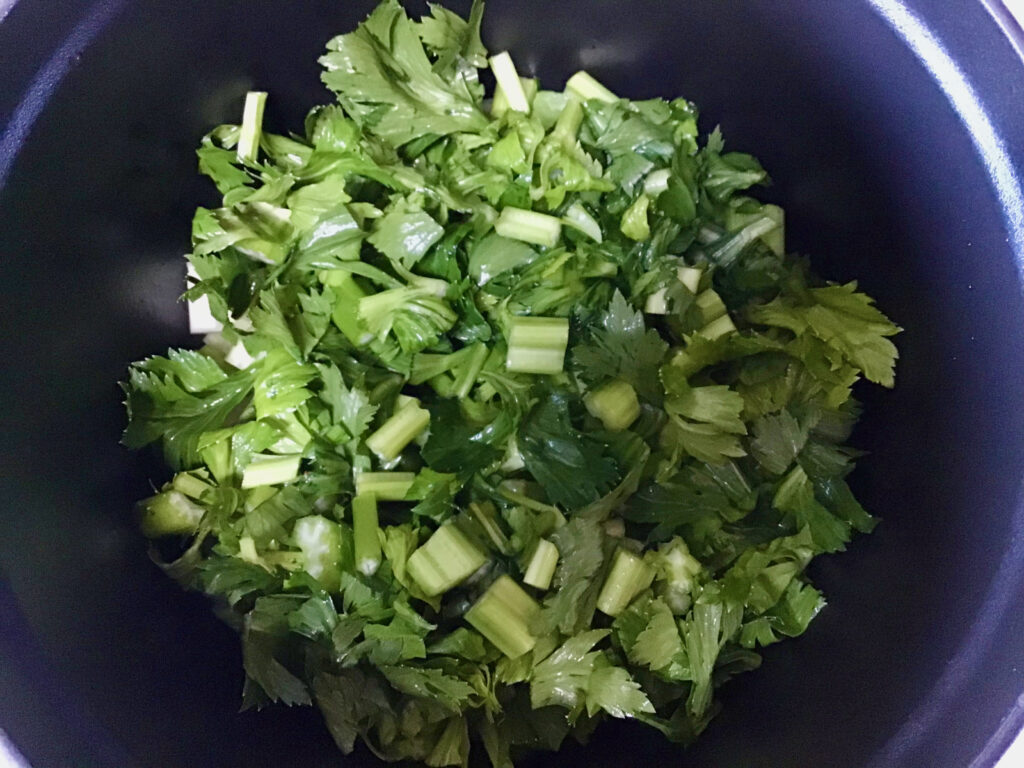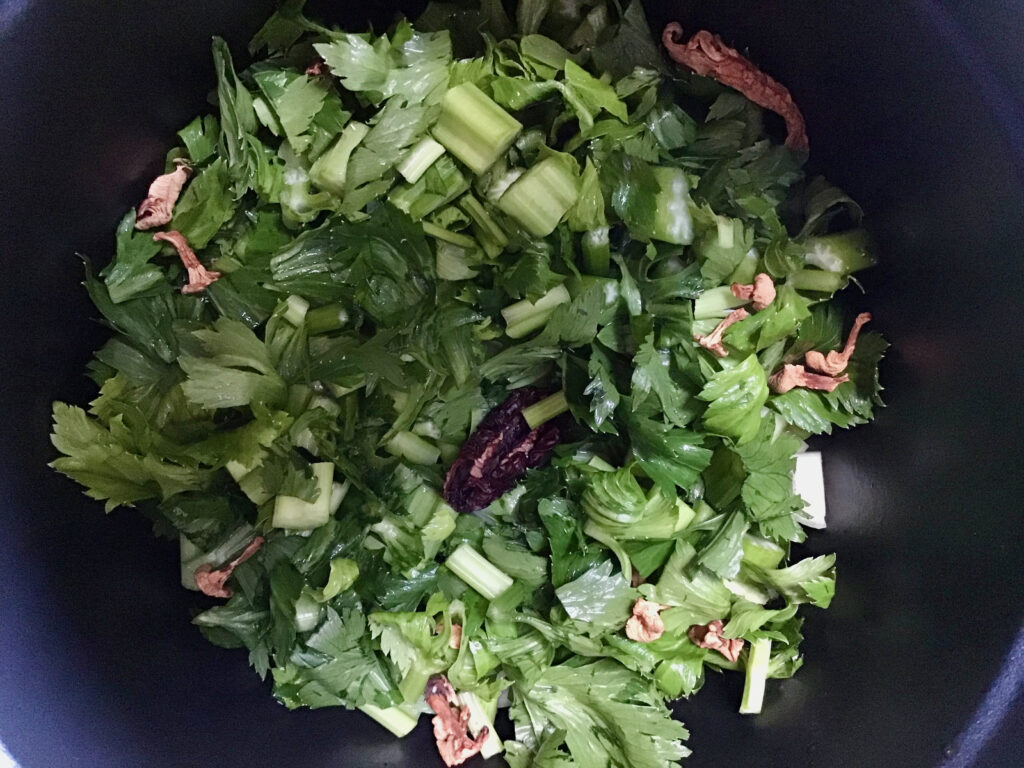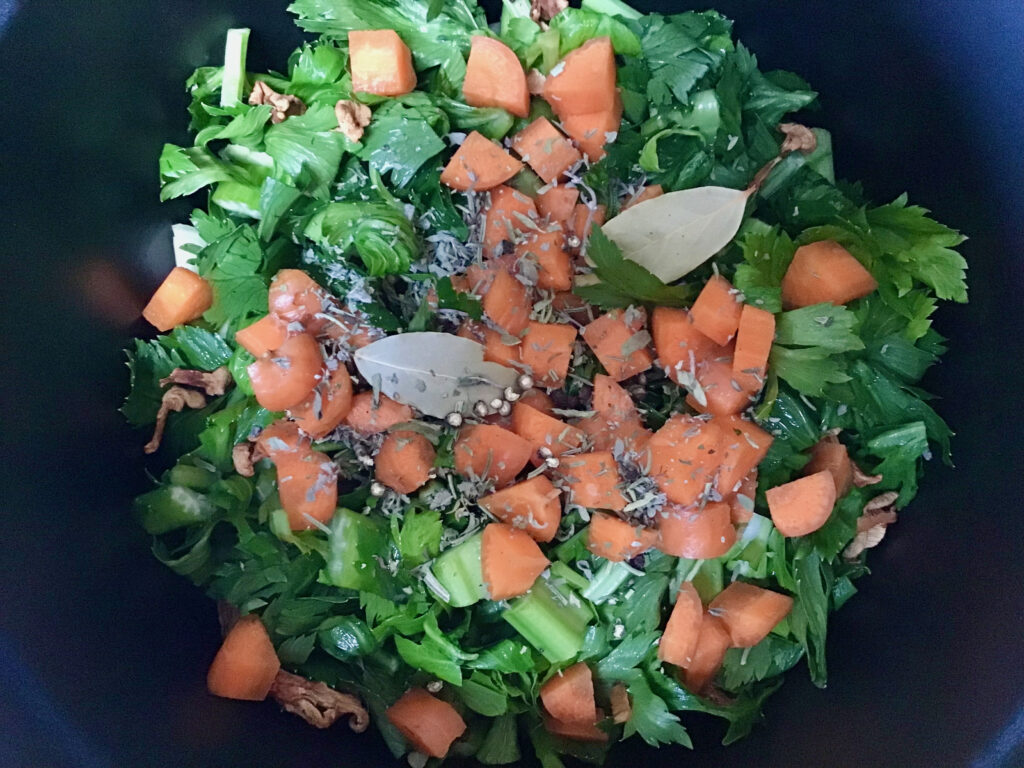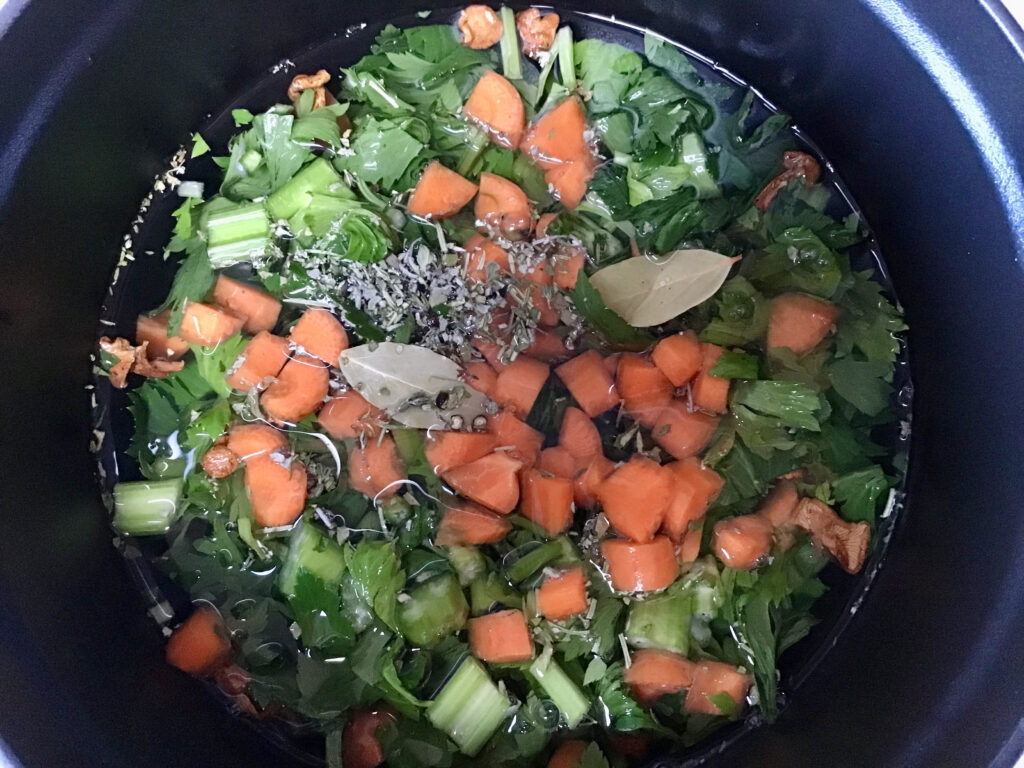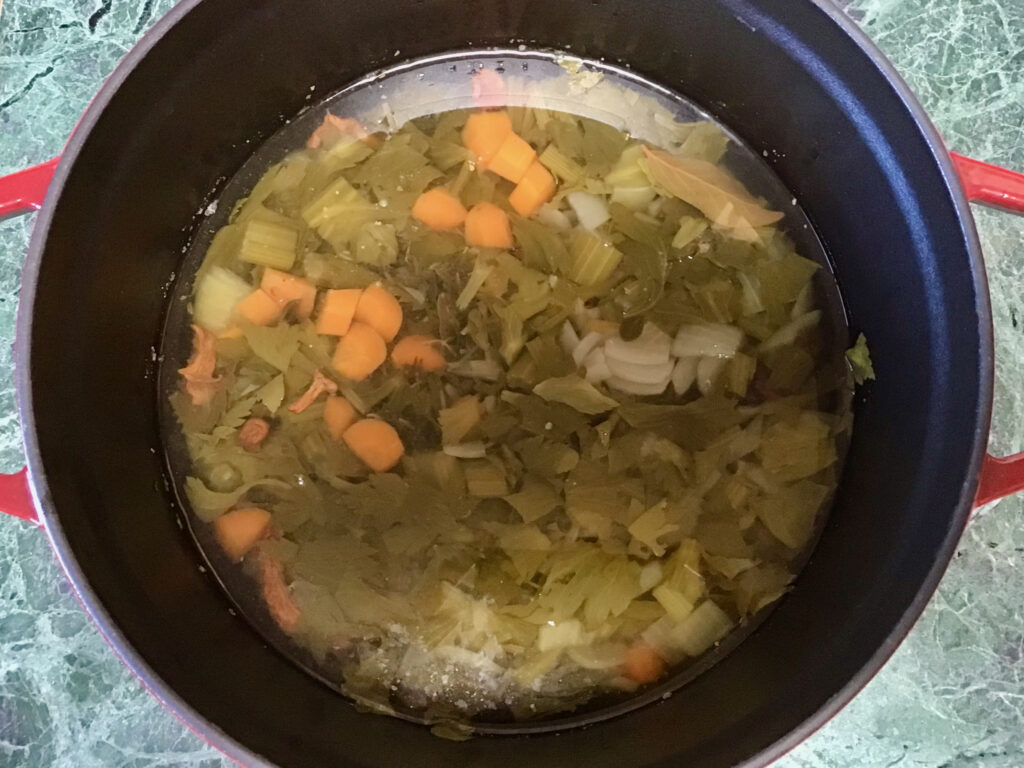It has become my tradition to make homemade vegetable broth when I come back home from the farmers market and get this beautiful celery. It is so long and doesn’t fit in the vegetable drawers of our fridge. When I cut off the parts where the stalk has leaves, it becomes the perfect length to store, and that top part is ideal for making the broth!
There is nothing like homemade vegetable broth. But to tell the truth, having lived in Europe for many years, I used to be accustomed to using the organic vegetable broth powder which is available in almost every health food store. However, after moving to the U.S., I found out that this organic broth powder is not common here at all. Instead, people buy the liquid broth in a carton box, and it was far pricier than making from the organic broth powder. This inspired me to make my own vegetable broth.
Ever since, I am so deeply in love with my own vegetable broth that there is no way I can go back to the powder, or using that carton liquid broth. Because the ingredients I use are slightly different each time when I make the broth, the flavor differs slightly every time. And this inconsistency I enjoy very much, which also brings more aliveness into the food.
Also, I believe the love, care, and joy I put into making it is being reflected in the broth’s energy and flavor. Since I started to make it, the soups have become more delicious than ever. This simple act can enrich the cooking as well as eating experience so beautifully.
The golden four vegetable ingredients for making broth
There are four golden vegetable ingredients for making vegetable broth that you don’t want to miss every time you make it:
- onion
- garlic
- celery
- carrot
In Japan, we call these vegetables Koumiyasai, which means “aromatic and flavorful vegetables.” As you can now see from its name, all these vegetables have an aromatic fragrance and unique flavor in nature, and they are perfect ingredients for making broth. Leek, parsley, ginger, as well as a few other Japanese vegetables also fall under this category.
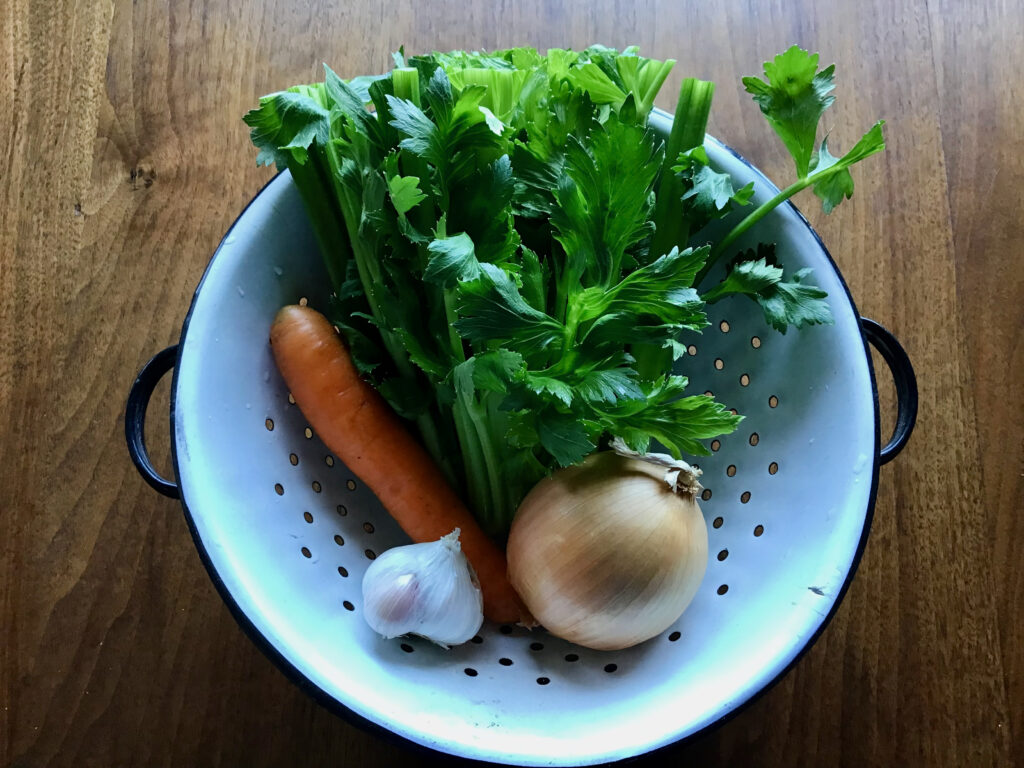
Other vegetable ingredients
Besides these four main ingredients above, there are a few others I like to use, depending on what I have in the kitchen that particular day:
- potato
- leek
- mushroom
- tomato or sun dried tomato
- ginger
Leek and ginger are part of the aromatic and flavorful vegetables. Potato brings some beautiful sweetness to the broth. Tomato’s sweet and acidic flavor adds different characteristic to the flavor. And all different kinds of edible mushrooms have high guanylic acid which brings rich umami flavor.
Today, I made a simple broth adding a sun dried tomato and some dried chanterelle mushrooms that were gifted to me by my dear friends Bente and Lisbeth, when I was still living in Norway. I have been using these mushrooms preciously little by little, always remembering the beautiful and deep Norwegian forest as well as my beloved friends there.
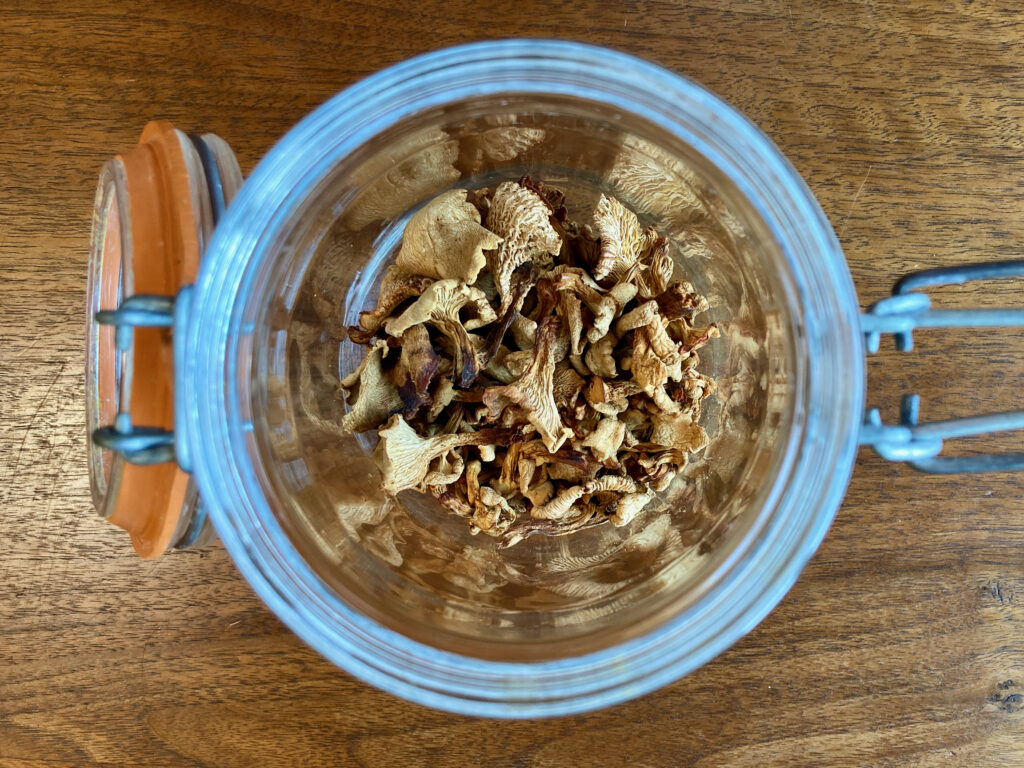
Herb ingredients
As the bouquet garni (a bundle of herbs) are essential ingredients for making soup in French cuisine, herbs add a complex aroma and subtle flavor which would change the flavor of the broth significantly. I still remember my childhood memory, when my mother was making tomato sauce for pasta. I tasted how the flavor transformed from something boring to a truly delicious by just adding the bay leaf and letting it cook for a little while.
Traditionally, bouquet garni is made with fresh herbs and some vegetables, but you can also make it with dried herbs.
The most commonly used herbs are:
- Bay leaf
- Italian parsley
- Thyme
- Leek’s leaf
- But you can also add such herbs as:
- Sage
- Rosemary
- Tarragon
- Marjoram
- Basil
- Oregano
When using dried herbs, some people make a sachet with cheese cloth, for instance, to put all the herbs in. But I usually put loose herbs into the pot directly. The herbs I use most often are bay leaf, roughly crushed black peppercorns, and herbes de provence, which I make with the fresh herbs I get at the farmers market. I combine thyme, oregano, sage, rosemary, and marjoram. Sprinkling those herbs, I always feel the magic.
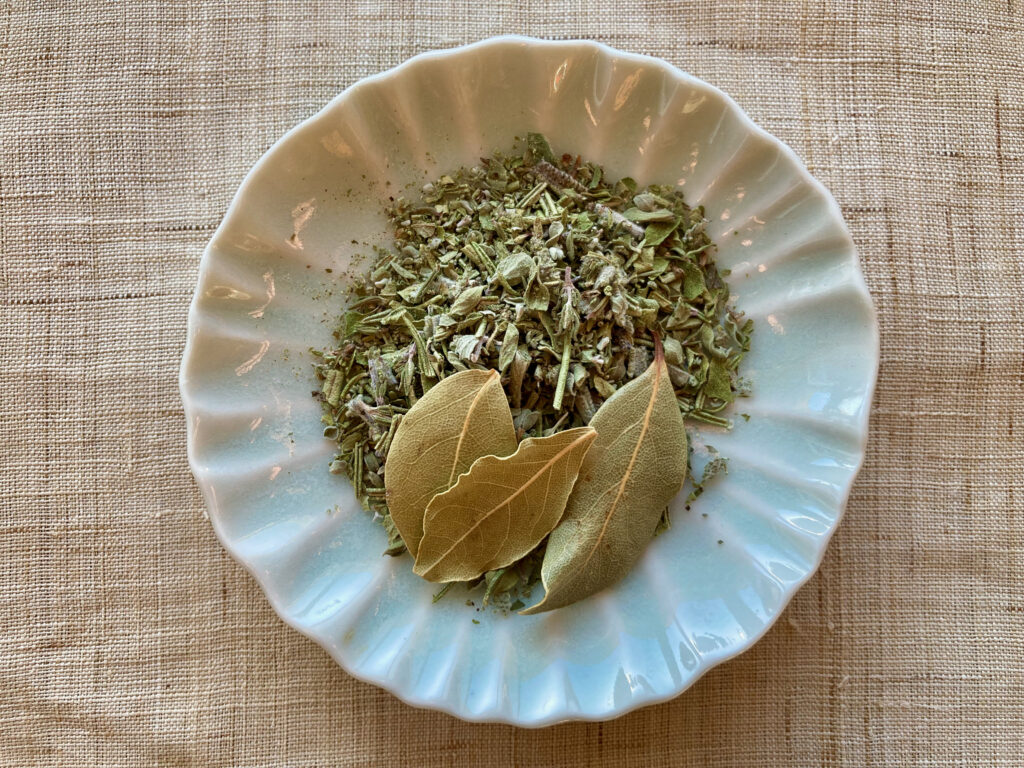
Layering the ingredients from Yin to Yang
If you have never done the layering method for cooking vegetables, try this one! You can experience a magical alchemy of nature. This is a method that has been used in my culture for generations. You layer the vegetables from yin to yang and cook them together. When you do so, the energy of all the vegetables circulate and blend with each other harmoniously which will also affect their flavor.
Yin vegetables are in general the ones that grow upwards, such as leafy vegetables and the ones that are on the ground. Yang vegetables are the ones that grow downwards such as root vegetables. Also, the whiter color is more yin and the darker color more yang. Through layering from yin to yang, the upward energy and downward energy are meeting inside the pot, blending and becoming as one.
How to make the broth
For making this broth, I layered from onion and crushed garlic with some mushrooms and sun dried tomato to celery, then lastly carrots. All vegetables I cut in the smaller pieces so that they can release their juices well. Then I placed some herbs on the top and poured water enough so that it can cover all the ingredients. Turn the heat to high to bring it to a boil, then turn the heat down to simmer for 25 minutes. The broth is done!
Storage
I store the broth in a container and put the amount in the fridge that I am planning to use during the week. If I still have some remaining, I will pour into container(s) the amount that I use for a single cooking and store in the freezer. In this way, I always have broth available. It is very helpful!
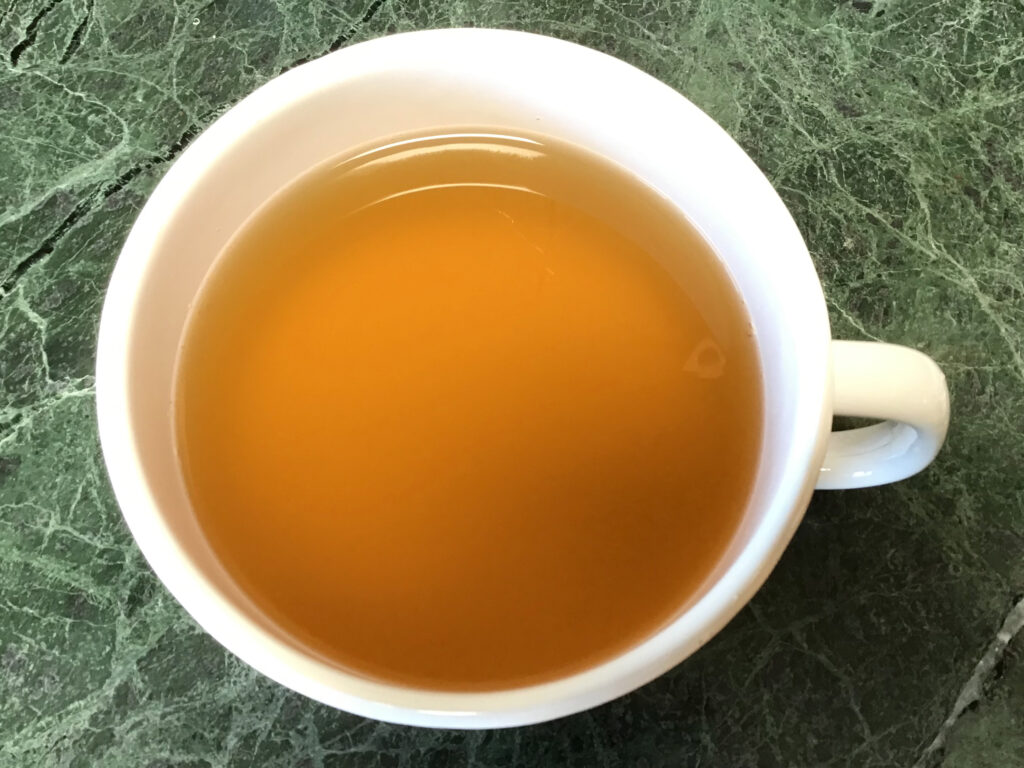
Enjoy the leftover vegetables!
Although the vegetables in the broth have released their nutrients and flavors, there is still a beautiful amount left in the vegetables. So, don’t throw them away! I store the vegetables in a container if I won’t use on that day. There are different meals you can create with it. I sometimes cook with the tomato sauce (wonderful with this roasted tomato sauce!), and eat with whole wheat spiral pasta. Or, I cook with some red lentils, season with salt, and after serving, pour some fresh EV olive oil on it and eat with cooked quinoa or millet.
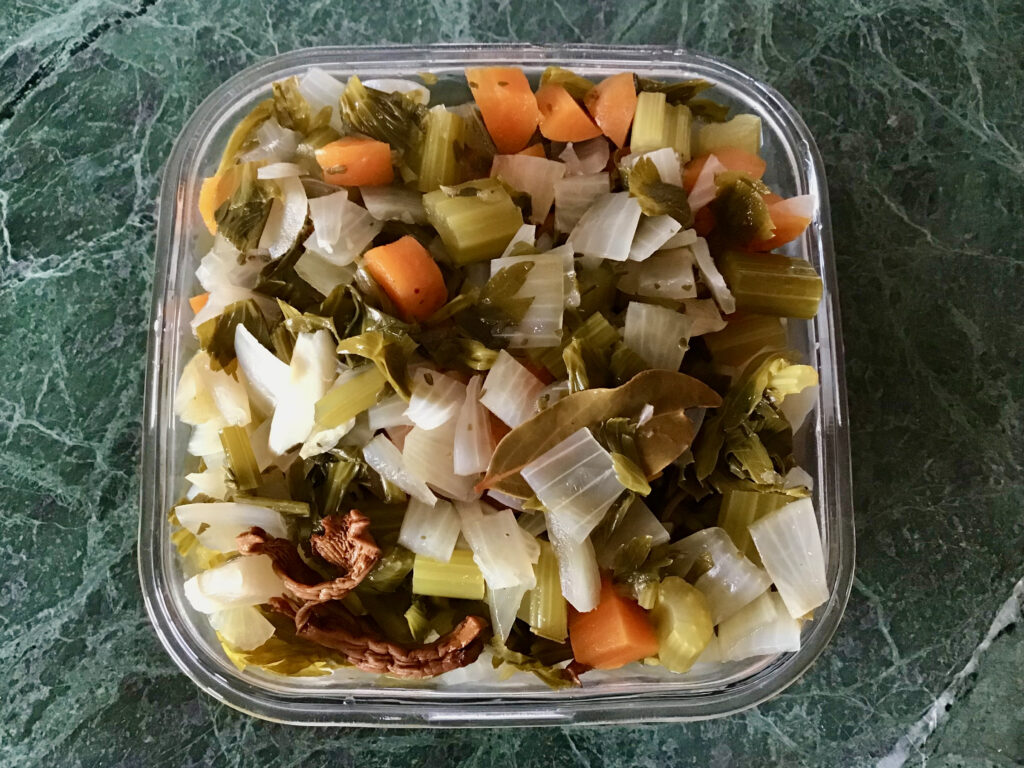
This time, I cooked with red lentils and added water, then seasoned with 2 tbsp of miso, served on top of brown rice. Although the broth is seasoned with Western herbs, it actually matches beautifully with the Japanese miso flavor! Very delicious!!
